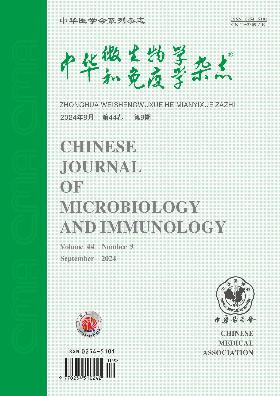Gut microbiota composition and diversity in the elderly supported by institution-based care and home-based care
Q4 Immunology and Microbiology
引用次数: 0
Abstract
Objective To investigate the gut microbiota diversity between the elderly supported by institution-based care and home-based care. Methods Fresh stool samples were collected from 18 aged persons supported by institution-based care (G1 group), 20 aged persons with home-based care (G2 group) and 20 middle-aged and young adults (G3 group). The V3-V4 hypervariable region of 16S rDNA was amplified and sequenced by next generation sequencing technology. Operational taxonomic units (OTUs) were analyzed by QIIME analysis platform for species annotation, diversity analysis, and inter-group difference analysis. Statistical analysis was performed using RStudio software. Results The top 6 microbiological taxa in the three groups were Firmicute, Bacteroidetes, Proteobacteria, Actinobacteria, Fusobacteria and Verrucomicrobia. The abundance of the Firmicute in the G1 and G2 groups showed significant differences [(61.47±5.58)% vs (76.55±3.64)%, P 0.05). Results of the NMDS analysis showed that the intra-group differences were greater than inter-group differences in G1 and G2 groups. Conclusions No significant difference in the diversity of gut microbiota was detected between the elderly supported by institution-based care and home-based care, but there were differences in the composition of the predominant gut microbiota. Key words: Institution-based care; Home-based care; Gut microbiota; 16S rRNA机构护理和家庭护理对老年人肠道菌群组成和多样性的影响
目的探讨机构养老和家庭养老老年人肠道菌群的多样性。方法收集18名机构养老老人(G1组)、20名居家养老老人(G2组)和20名中青年(G3组)的新鲜粪便样本。扩增16S rDNA V3-V4高变区,采用下一代测序技术进行测序。利用QIIME分析平台对各物种进行物种注释、多样性分析和群间差异分析。采用RStudio软件进行统计分析。结果3组微生物类群中排名前6位的分别是厚壁菌门、拟杆菌门、变形菌门、放线菌门、梭菌门和Verrucomicrobia。G1组和G2组厚壁菌丰度差异有统计学意义[(61.47±5.58)% vs(76.55±3.64)%,P < 0.05]。NMDS分析结果显示,G1、G2组内差异大于组间差异。结论接受机构护理和家庭护理的老年人肠道菌群多样性无显著差异,但主要肠道菌群组成存在差异。关键词:机构护理;家庭护理;肠道微生物群;16 s rRNA
本文章由计算机程序翻译,如有差异,请以英文原文为准。
求助全文
约1分钟内获得全文
求助全文
来源期刊

中华微生物学和免疫学杂志
Immunology and Microbiology-Virology
CiteScore
0.50
自引率
0.00%
发文量
6906
期刊介绍:
Chinese Journal of Microbiology and Immunology established in 1981. It is one of the series of journal sponsored by Chinese Medical Association. The aim of this journal is to spread and exchange the scientific achievements and practical experience in order to promote the development of medical microbiology and immunology. Its main contents comprise academic thesis, brief reports, reviews, summaries, news of meetings, book reviews and trends of home and abroad in this field. The distinguishing feature of the journal is to give the priority to the reports on the research of basic theory, and take account of the reports on clinical and practical skills.
 求助内容:
求助内容: 应助结果提醒方式:
应助结果提醒方式:


